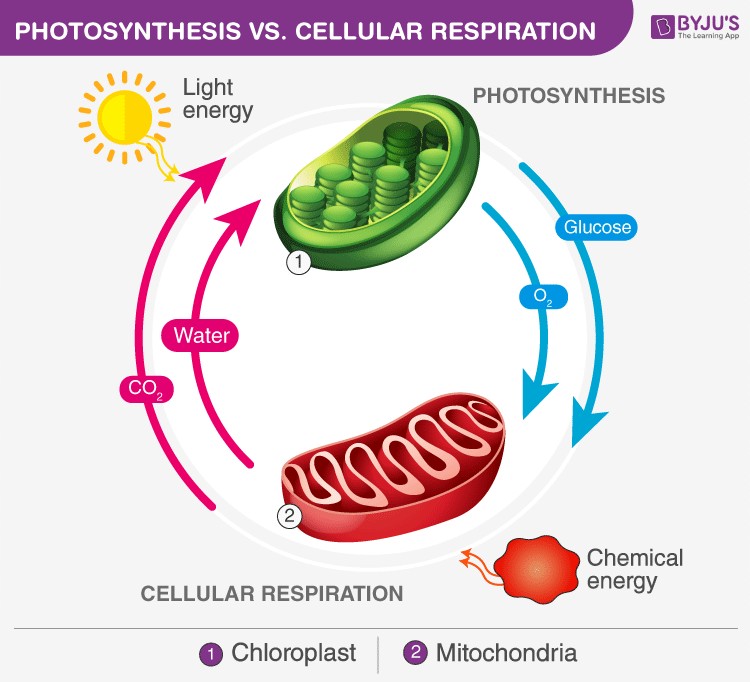Plants release oxygen as a byproduct of photosynthesis, a process vital for life on Earth. This very oxygen is what we breathe in, allowing our cells to perform cellular respiration and generate ATP, the energy currency of life. Photosynthesis and cellular respiration are fundamental biological reactions that, while distinct, are deeply interconnected and complementary. At their core, they are similar reactions occurring in opposite directions. Respiration uses oxygen and glucose to produce water and carbon dioxide, whereas photosynthesis uses carbon dioxide and water, along with light energy, to produce glucose and oxygen.
This relationship between cellular respiration and photosynthesis is mutually beneficial. Photosynthesis is essential for producing the glucose and oxygen needed for cellular respiration in many organisms, and cellular respiration produces the carbon dioxide that plants utilize in photosynthesis. Neither process can truly function in isolation over the long term within an ecosystem.
In many ways, photosynthesis and cellular respiration can be viewed as reverse processes. Photosynthesis is an anabolic pathway, building complex molecules from simpler ones, while cellular respiration is a catabolic pathway, breaking down complex molecules to release energy. Let’s delve into the specific differences between cellular respiration and photosynthesis.
Key Differences Between Cellular Respiration and Photosynthesis
 Photosynthesis vs Cellular Respiration: A comparative diagram highlighting the key differences between these essential biological processes.
Photosynthesis vs Cellular Respiration: A comparative diagram highlighting the key differences between these essential biological processes.
| Feature | Cellular Respiration | Photosynthesis |
|---|---|---|
| Occurrence | Occurs in all living organisms, including plants, animals, fungi, and bacteria. | Primarily occurs in phototrophs, such as green plants, algae, and some bacteria, containing chlorophyll. |
| Location | Takes place in the mitochondria within the cell. | Takes place in the chloroplasts within plant cells and algae cells. |
| Reactants | Requires glucose (sugar) and oxygen as input materials. | Requires carbon dioxide, water, and light energy (sunlight) as input materials. |
| Products | Produces carbon dioxide, water, and energy in the form of ATP (adenosine triphosphate). | Produces glucose (sugar), oxygen, and water as output materials. |
| Metabolic Process | A catabolic process, involving the breakdown of glucose to release energy. | An anabolic process, involving the synthesis of glucose from carbon dioxide and water, using light energy. |
| Gas Exchange | Oxygen is consumed from the environment, and carbon dioxide is released as a waste product. | Carbon dioxide is taken in from the environment, and oxygen is released as a byproduct. |
| Energy Role | Releases energy stored in glucose, making it available for cellular work. | Captures light energy and stores it in the chemical bonds of glucose molecules. |
| Reaction Type | An exergonic reaction, meaning it releases energy into the surroundings. | An endergonic reaction, meaning it requires energy input (light energy) to proceed. |
| Light Dependency | Independent of sunlight; cellular respiration occurs continuously, day and night. | Dependent on sunlight; photosynthesis occurs only in the presence of light. |
| Chemical Equation | C6H12O6 + 6O2 → 6CO2 + 6H2O + Energy (ATP) | 6CO2 + 6H2O + Light Energy → C6H12O6 + 6O2 |
The Interplay of Photosynthesis and Cellular Respiration
While the table highlights the differences, it’s crucial to recognize the interdependence of photosynthesis and cellular respiration in maintaining life. Photosynthesis uses sunlight to convert carbon dioxide and water into glucose and oxygen. This glucose serves as the primary source of energy for plants and, directly or indirectly, for nearly all other organisms on Earth. The oxygen produced is essential for cellular respiration in aerobic organisms, including animals and plants themselves (for respiration at night or in non-photosynthetic parts).
Cellular respiration, in turn, utilizes the glucose and oxygen produced by photosynthesis to generate energy (ATP) for cellular activities. A key byproduct of cellular respiration is carbon dioxide, which is then released back into the atmosphere and becomes a reactant for photosynthesis. This cyclical exchange of gases and energy-rich molecules forms a fundamental balance in ecosystems.
In conclusion, while photosynthesis and cellular respiration are distinct processes with contrasting inputs, outputs, and functions, they are intrinsically linked. They represent two halves of a biological cycle, where the products of one process are the reactants of the other. This intricate relationship is essential for energy flow and the cycling of matter in the biosphere, underpinning the vast majority of life as we know it.
